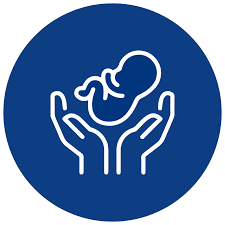+918042757060

This is your website preview.
Currently it only shows your basic business info. Start adding relevant business details such as description, images and products or services to gain your customers attention by using Boost 360 android app / iOS App / web portal.
Description
Asthma in children is a chronic condition that requires a combination of long-term management and quick-relief strategies during flare-ups. Proper treatment helps control symptoms, prevent attacks, and improve the child’s quality of life. Goals of Asthma Treatment Prevent chronic symptoms like coughing, wheezing, and shortness of breath. Reduce the frequency of asthma attacks. Maintain normal activity levels, including play and exercise. Minimize side effects from medications. Components of Asthma Treatment 1. Long-Term Control Medications These are used daily to manage persistent asthma and prevent symptoms. Inhaled Corticosteroids: Examples: Budesonide, Fluticasone. Function: Reduce airway inflammation over time. Delivery: Often given via a metered-dose inhaler (MDI) with a spacer or a nebulizer. Leukotriene Modifiers: Examples: Montelukast. Function: Block inflammatory chemicals in the airways. Delivery: Oral tablets or granules. Long-Acting Beta-Agonists (LABAs): Examples: Salmeterol, Formoterol. Function: Relax airway muscles; used in combination with inhaled steroids. Combination Inhalers: Examples: Budesonide/Formoterol, Fluticasone/Salmeterol. Function: Combine anti-inflammatory and bronchodilator effects. 2. Quick-Relief (Rescue) Medications Used to relieve symptoms during an asthma attack. Short-Acting Beta-Agonists (SABAs): Examples: Albuterol (Salbutamol), Levalbuterol. Function: Provide rapid relaxation of airway muscles. Delivery: Inhalers, nebulizers, or spacers for children. Anticholinergics: Examples: Ipratropium. Function: Provide additional relief in severe cases. Delivery: Nebulizer or inhaler. 3. Allergy Management (If Allergies Trigger Asthma): Antihistamines: For managing mild allergies. Allergy Shots (Immunotherapy): To reduce sensitivity to allergens over time. Avoidance Strategies: Reducing exposure to dust mites, pet dander, pollen, smoke, and other triggers. Non-Medication Management Asthma Action Plan: Developed with a doctor to guide medication use and emergency responses. Monitoring Symptoms: Use of a peak flow meter to track airway function and detect worsening asthma. Lifestyle Adjustments: Avoiding known triggers like smoke, pollution, or allergens. Maintaining a healthy diet and regular exercise (under medical guidance). Vaccinations: Annual flu vaccine and pneumococcal vaccine to prevent respiratory infections. Steps to Handle an Asthma Attack Stay calm and reassure the child. Use a rescue inhaler or nebulizer as prescribed. Encourage slow, deep breathing to help calm and open airways. Seek emergency medical attention if: Symptoms do not improve after using the rescue medication. The child experiences difficulty speaking or bluish lips/nails. When to See a Doctor Frequent asthma symptoms (more than twice a week). Need for rescue medication more than twice a month. Persistent coughing or wheezing, even at rest. Difficulty in sleeping due to symptoms.

